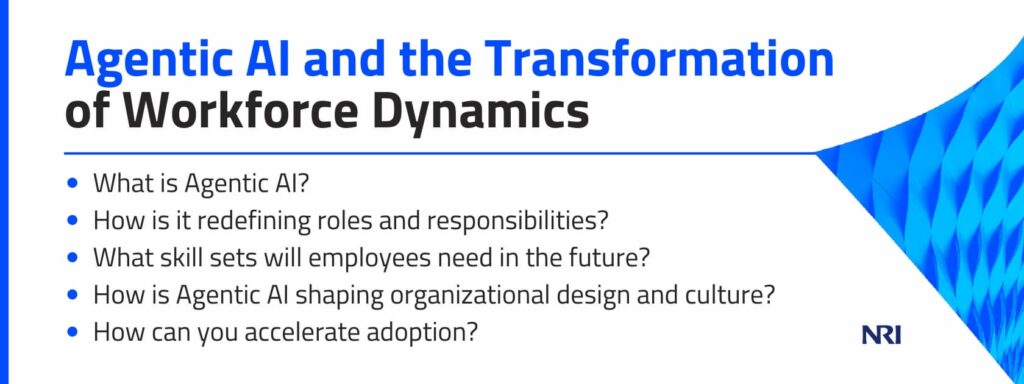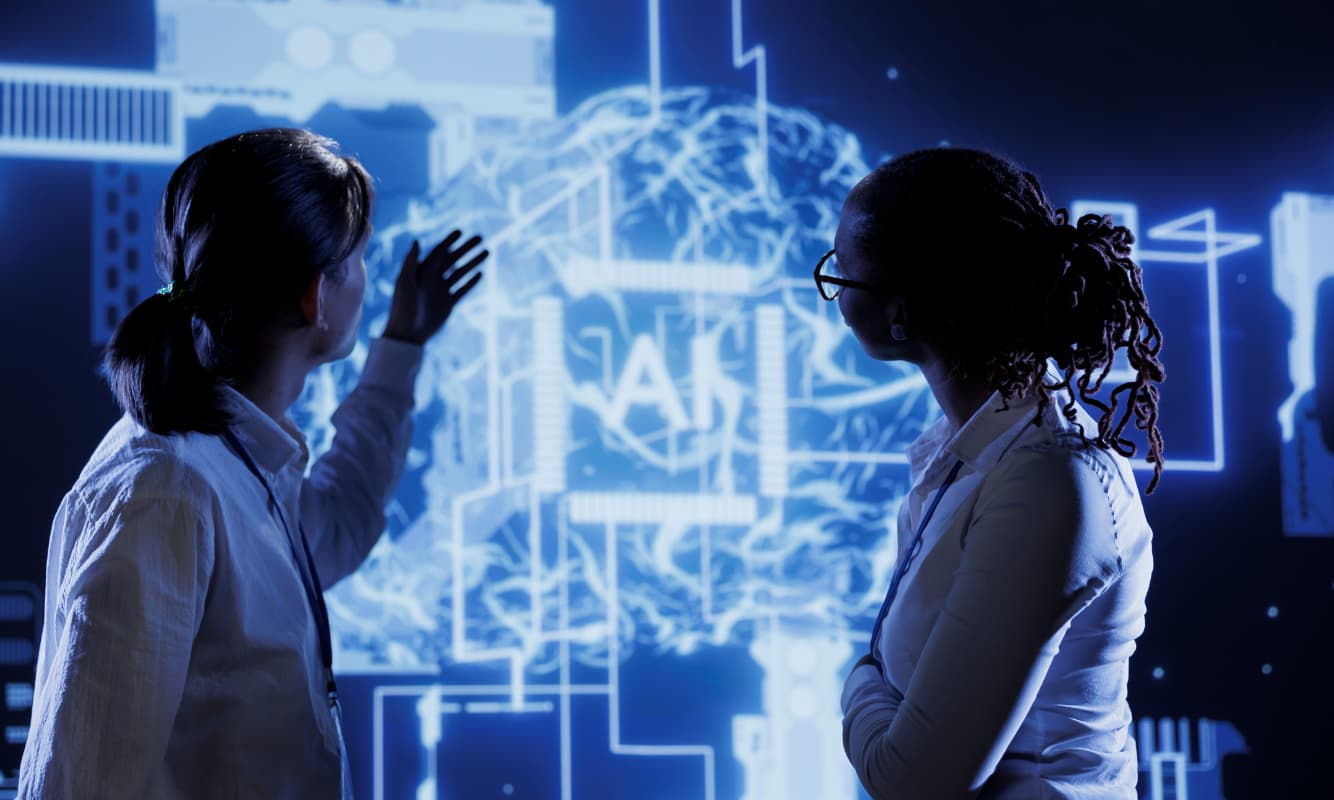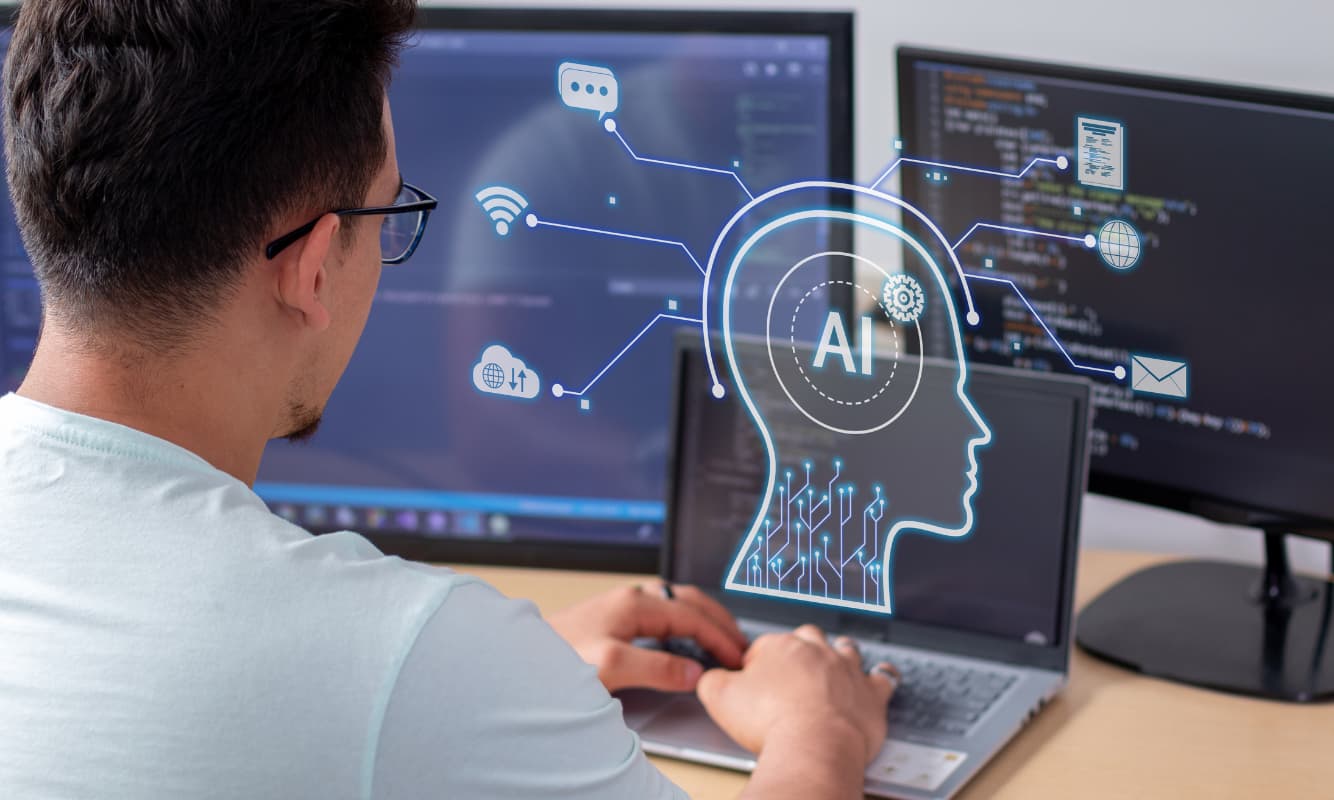Discover what operationalizing Agentic AI could mean for your enterprise.

In a June 3, 2025, article titled “The Future of Work is Agentic,” McKinsey Senior Partner Jorge Amar raised a crucial point that every IT decision-maker should keep top of mind moving forward. That is, the notion of an organization chart including both human employees and artificial intelligence (AI agents) “isn’t science fiction – it’s happening, and it’s happening relatively quickly.”
A recent Salesforce survey of 200 human resource executives reveals that 15% of organizations have already implemented Agentic AI solutions, with adoption expected to grow by 327% by 2027.
If you take any industry you can think of, from healthcare to education, manufacturing to government, you see that AI is evolving from a passive tool to an active collaborator. IT and business leaders must move quickly and proactively develop their teams’ capabilities to capitalize on this new dynamic.
In this article, we examine what exactly agentic AI is and how it differs from earlier forms of AI. We will also explore how it’s reshaping job roles, required skills, and even organizational structures. Understanding these trends will prepare you for what’s to come and maintain your competitive edge. Let’s jump right in!
From Automation to Autonomy: Understanding Agentic AI
First things first, what’s this new form of AI that’s captured the imagination of the technology and business worlds? Let’s break it down.
In a nutshell, Agentic AI is an intelligent system that, acting autonomously, makes decisions and executes tasks to solve a problem. It plans, adapts, and orchestrates multi-step workflows to tackle complex business scenarios in real time.
Moreover, agentic AI self-improves through reinforcement learning.
McKinsey’s Jorge Amar puts it all together nicely:
Agentic AI “perceives reality based on its training. It then decides, applies judgment, and executes something… It learns if what the agent did was good or bad and then feeds that back in.”
Traditional AI allowed us to automate tasks using pre-programmed rules. Similarly, Generative AI allowed us to prompt models to produce text, code, or images on demand. With Agentic AI, the dynamic shifts from tools that support work to “agents” that do the job. Ultimately, that means we can deliver significantly greater results more quickly, working alongside Agentic AI.
How Are Roles and Responsibilities Changing?
According to McKinsey, organizations are still in the early stages of adopting agentic AI. Typically, they deploy Agents in deterministic environments with a straightforward process to follow, such as software development, IT help desks, and customer service tickets.
For example, some companies are piloting agents in IT support, where an agent “picks up” a request, determines the correct process, and automatically triggers the next steps to resolve issues.
One organization, Klarna, utilizes an Agent from OpenAI to handle front-line inquiries 24/7 and supercharge its customer service for 150 million clients. So far, the AI Agent has managed 2.3 million customer chats (roughly two-thirds of the company’s total volume), effectively replacing the work of 700 full-time employees.
Looking forward, AI Agents will continue to shape the nature of work for analysts, coordinators, or IT operators, with human-AI collaboration becoming the norm.
In business, for example, employees will increasingly take on the role of “AI co-pilots,” providing high-level direction while the AI handles routine execution. In IT, we will see the rise of the “AI orchestrator.” Rather than programming models from scratch, these specialists will design and oversee networks of agents. They will break large tasks into a sequence of agent-driven steps, calibrate which model handles each subtask, and intervene when human judgment is needed.
Evolving Skill Sets and Talent Development
With jobs changing, there’s a demand for new skills.
Technical capabilities that are vital for employees to work alongside intelligent agents successfully include:
- Machine learning engineering
- Prompt engineering
- Advanced data fluency
- AI oversight
- Process mining
- Data pipeline management
To prepare, organizations must be proactive about reskilling and upskilling. This includes:
- Offering training in AI literacy, data science, and machine learning fundamentals
- Creating new career paths focused on AI ethics, governance, and human-AI interaction
- Fostering adaptability and lifelong learning as core organizational values
At the same time, they must recognize that Agentic AI is not just changing jobs—it’s transforming the very fabric of organizations.
Impacts on Organizational Design and Culture
Traditional hierarchies, built on the flow of knowledge and expertise from the top down, are being disrupted. As AI agents become capable of decomposing goals, coordinating workflows, and making decisions, organizations are moving toward flatter, more agile structures. Decision-making power is being redistributed, with AI agents handling operational choices and humans focusing on strategic direction and ethical considerations.
Leaders and managers will need AI literacy to oversee both people and digital labor in this new hybrid dynamic. Additionally, they must shift their focus from traditional performance metrics to outcome-based ones that reflect the combined impact of human and AI contributions. Finally, incorporating robust AI governance and ethical frameworks into team structures will be crucial to ensure transparency, accountability, and responsible use of intelligent agents.
In sum:
- Expect organization charts to evolve
- Decision rights and authority will shift with AI capabilities
- Operations will become “embedded and automated” so that humans transition to oversight roles
- Companies will become increasingly networked and fluid, with AI integrated into their operations, strategy, and culture.
Ready to prepare for this future of work?
Accelerate Agentic AI Adoption with NRI
The once futuristic idea of an AI-powered workforce is now a present-day reality. And it’s here to stay. Now, you can unlock unprecedented levels of productivity, innovation, and agility. But realizing this potential requires a proactive approach.
Begin mapping your workflows now to identify where AI agents can bring value. Next, invest in talent development. Train employees not only on AI tools but also on the strategic and creative skills that AI can’t replicate. Redesign teams and leadership structures with human-AI collaboration in mind, and establish clear governance to guide this “cognitive enterprise”.
As the trusted digital transformation partner of the world’s most pre-eminent, NRI can accelerate your journey to enterprise-wide Agentic AI adoption. We’ll meet you where you are and, together, chart a path forward that’s optimal for you.
Get your free custom AI readiness assessment today.



